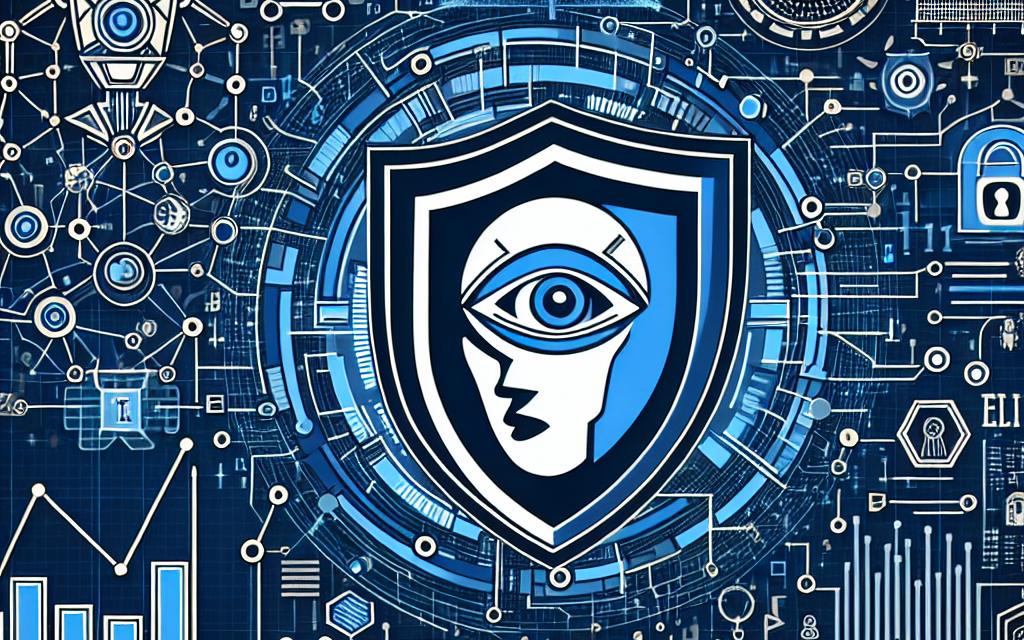Unveiling AI and Cybersecurity: Essential Insights from IEEE

In the rapidly evolving landscape of technology, Artificial Intelligence (AI) and cybersecurity have emerged as pivotal domains that are reshaping industries and societies. The Institute of Electrical and Electronics Engineers (IEEE), a leading authority in technological advancements, provides critical insights into the intersection of AI and cybersecurity. This article delves into the essential insights from IEEE, exploring the profound impact of AI on cybersecurity, the challenges and opportunities it presents, and the future trajectory of these intertwined fields.
The Role of AI in Enhancing Cybersecurity
Artificial Intelligence has become a cornerstone in the realm of cybersecurity, offering innovative solutions to combat increasingly sophisticated cyber threats. The integration of AI into cybersecurity frameworks is not just a trend but a necessity, as traditional methods struggle to keep pace with the dynamic nature of cyber threats.
AI-Powered Threat Detection
One of the most significant contributions of AI to cybersecurity is its ability to enhance threat detection capabilities. Traditional cybersecurity systems rely heavily on predefined rules and signatures to identify threats, which can be limiting when dealing with novel or evolving threats. AI, particularly machine learning algorithms, can analyze vast amounts of data to identify patterns and anomalies that may indicate a cyber threat.
For instance, AI systems can monitor network traffic in real-time, identifying unusual patterns that could signify a potential breach. By learning from historical data, these systems can predict and preemptively respond to threats, significantly reducing the time between detection and response. According to a report by Capgemini, 69% of organizations believe that AI is necessary to respond to cyber threats, and 64% say it lowers the cost of detecting breaches and responding to them.
Automated Incident Response
AI not only enhances threat detection but also automates incident response, a critical aspect of cybersecurity. In the event of a security breach, time is of the essence. AI-driven systems can automate the initial response to incidents, such as isolating affected systems, blocking malicious IP addresses, and initiating data backups. This automation reduces the burden on cybersecurity teams, allowing them to focus on more complex tasks that require human intervention.
Moreover, AI can assist in post-incident analysis by providing detailed reports on the nature of the attack, the vulnerabilities exploited, and the effectiveness of the response measures. This information is invaluable for improving future security protocols and preventing similar incidents.
Predictive Analytics and Threat Intelligence
Predictive analytics is another area where AI is making significant strides in cybersecurity. By analyzing historical data and identifying trends, AI can predict potential future threats and vulnerabilities. This proactive approach allows organizations to strengthen their defenses before an attack occurs.
AI-driven threat intelligence platforms aggregate data from various sources, including dark web forums, social media, and threat databases, to provide a comprehensive view of the threat landscape. This intelligence is crucial for organizations to stay ahead of cybercriminals and adapt their security strategies accordingly.
Case Study: AI in Action
A notable example of AI’s impact on cybersecurity is its implementation by Darktrace, a leading cybersecurity company. Darktrace’s AI technology, known as the Enterprise Immune System, mimics the human immune system to detect and respond to threats autonomously. By learning the normal ‘pattern of life’ for every user and device within a network, it can identify deviations that may indicate a threat, even if the threat is previously unknown.
This approach has proven effective in numerous cases, including the detection of a sophisticated insider threat at a major financial institution. The AI system identified unusual data transfers and access patterns, alerting the security team to a potential breach. This early detection allowed the organization to mitigate the threat before any significant damage occurred.
Challenges in AI-Driven Cybersecurity
While AI offers numerous benefits for cybersecurity, it also presents challenges that must be addressed. One of the primary concerns is the potential for AI systems to be targeted by adversaries. Cybercriminals are increasingly using AI to develop more sophisticated attacks, such as AI-generated phishing emails that are difficult to distinguish from legitimate communications.
Additionally, the reliance on AI for cybersecurity raises ethical and privacy concerns. AI systems require access to vast amounts of data to function effectively, which can lead to potential privacy violations if not managed properly. Ensuring transparency and accountability in AI-driven cybersecurity solutions is crucial to maintaining trust and compliance with regulations.
Challenges and Ethical Considerations in AI and Cybersecurity
As AI becomes more integrated into cybersecurity, it brings with it a host of challenges and ethical considerations that must be addressed to ensure its effective and responsible use. These challenges range from technical limitations to broader societal implications, requiring a multifaceted approach to navigate.
Technical Limitations and Vulnerabilities
Despite its potential, AI in cybersecurity is not without technical limitations. One significant challenge is the reliance on large datasets for training AI models. These datasets must be comprehensive and representative to ensure the accuracy and reliability of AI systems. However, obtaining high-quality data can be difficult, and biased or incomplete data can lead to flawed AI models that may overlook certain threats or generate false positives.
Moreover, AI systems themselves can become targets for cyberattacks. Adversarial attacks, where malicious actors manipulate input data to deceive AI models, pose a significant threat. For example, an attacker could subtly alter network traffic patterns to bypass AI-based intrusion detection systems. Ensuring the robustness and resilience of AI models against such attacks is a critical area of research and development.
Privacy Concerns and Data Security
The use of AI in cybersecurity often involves processing vast amounts of sensitive data, raising concerns about privacy and data security. AI systems require access to personal and organizational data to function effectively, which can lead to potential privacy violations if not managed properly. Ensuring that AI systems comply with data protection regulations, such as the General Data Protection Regulation (GDPR), is essential to maintaining trust and safeguarding privacy.
Additionally, the storage and transmission of data used by AI systems must be secure to prevent unauthorized access and data breaches. Implementing robust encryption and access control measures is crucial to protecting sensitive information and maintaining the integrity of AI-driven cybersecurity solutions.
Ethical Implications of AI in Cybersecurity
The ethical implications of AI in cybersecurity extend beyond privacy concerns. The use of AI raises questions about accountability and transparency, particularly when AI systems make autonomous decisions that impact individuals and organizations. Ensuring that AI-driven cybersecurity solutions are transparent and explainable is essential to maintaining trust and accountability.
Furthermore, the potential for AI to be used in offensive cyber operations raises ethical concerns. While AI can enhance defensive capabilities, it can also be weaponized to conduct cyberattacks, such as automated hacking or the deployment of AI-generated malware. Establishing ethical guidelines and international norms for the use of AI in cybersecurity is crucial to preventing its misuse and ensuring its responsible deployment.
Case Study: Ethical Challenges in AI Deployment
A case study highlighting the ethical challenges of AI in cybersecurity is the use of facial recognition technology for security purposes. While facial recognition can enhance security by identifying potential threats in real-time, it also raises significant privacy and ethical concerns. The potential for misuse, such as surveillance without consent or racial profiling, has led to widespread debate and calls for regulation.
In response to these concerns, several cities and organizations have implemented bans or restrictions on the use of facial recognition technology. This case underscores the importance of balancing security benefits with ethical considerations and the need for clear guidelines and oversight in the deployment of AI technologies.
Addressing Challenges and Ethical Considerations
Addressing the challenges and ethical considerations of AI in cybersecurity requires a collaborative approach involving stakeholders from various sectors, including government, industry, academia, and civil society. Developing comprehensive frameworks and guidelines for the responsible use of AI in cybersecurity is essential to ensuring its effective and ethical deployment.
Moreover, ongoing research and development are crucial to overcoming technical limitations and enhancing the robustness and resilience of AI systems. Investing in education and training programs to equip cybersecurity professionals with the skills needed to manage AI-driven solutions is also vital to addressing these challenges.
Opportunities for Innovation in AI and Cybersecurity
The integration of AI into cybersecurity presents numerous opportunities for innovation, driving advancements that can significantly enhance security measures and protect against evolving threats. These opportunities span various domains, from improving threat detection and response to developing new security paradigms and fostering collaboration across industries.
Advancements in Threat Detection and Response
AI’s ability to analyze vast amounts of data in real-time offers significant opportunities for improving threat detection and response. By leveraging machine learning algorithms, AI systems can identify patterns and anomalies that may indicate a cyber threat, enabling organizations to respond more quickly and effectively.
For example, AI can enhance endpoint security by continuously monitoring devices for suspicious activity and automatically isolating compromised systems. This proactive approach reduces the risk of data breaches and minimizes the impact of cyberattacks. Additionally, AI-driven security information and event management (SIEM) systems can aggregate and analyze data from multiple sources, providing a comprehensive view of the threat landscape and enabling more informed decision-making.
Development of New Security Paradigms
The integration of AI into cybersecurity is driving the development of new security paradigms that go beyond traditional approaches. One such paradigm is zero-trust architecture, which assumes that threats can originate from both outside and inside the network. AI plays a crucial role in implementing zero-trust principles by continuously verifying user identities and monitoring access to resources.
Another emerging paradigm is the use of AI for behavioral biometrics, which analyzes user behavior patterns to authenticate identities. This approach enhances security by providing an additional layer of verification that is difficult for attackers to replicate. By continuously learning and adapting to user behavior, AI-driven behavioral biometrics can detect anomalies that may indicate unauthorized access.
Fostering Collaboration Across Industries
The integration of AI into cybersecurity fosters collaboration across industries, driving innovation and the development of new solutions. By sharing threat intelligence and best practices, organizations can collectively enhance their security measures and stay ahead of cybercriminals.
Industry collaborations, such as the Cyber Threat Alliance (CTA), bring together cybersecurity companies to share threat intelligence and develop coordinated responses to cyber threats. AI plays a crucial role in these collaborations by analyzing shared data and identifying emerging threats, enabling organizations to respond more effectively.
Case Study: AI-Driven Innovation in Cybersecurity
A case study highlighting AI-driven innovation in cybersecurity is the development of AI-based deception technologies. These technologies create realistic decoys and traps within a network to lure attackers and gather intelligence on their tactics and techniques. By analyzing attacker behavior, AI-driven deception technologies can identify vulnerabilities and improve security measures.
One example is the use of honeypots, which are decoy systems designed to attract attackers and monitor their activities. AI enhances honeypots by automatically adapting their configurations based on attacker behavior, making them more effective at gathering intelligence and detecting threats.
Future Opportunities for AI and Cybersecurity
The future of AI and cybersecurity holds significant opportunities for innovation and advancement. As AI technologies continue to evolve, they will enable more sophisticated threat detection and response capabilities, enhancing security measures and protecting against emerging threats.
Moreover, the integration of AI into cybersecurity will drive the development of new security paradigms and foster collaboration across industries. By leveraging AI’s capabilities, organizations can enhance their security measures, improve threat intelligence, and stay ahead of cybercriminals.
The Future Trajectory of AI and Cybersecurity
The future trajectory of AI and cybersecurity is poised for significant advancements, driven by ongoing research, technological innovations, and evolving threat landscapes. As AI continues to mature, its integration into cybersecurity will reshape how organizations protect their digital assets and respond to cyber threats.
Emerging Technologies and Trends
Several emerging technologies and trends are set to shape the future of AI and cybersecurity. One such trend is the increasing use of AI for autonomous cybersecurity operations. As AI systems become more sophisticated, they will be capable of autonomously managing security tasks, such as threat detection, incident response, and vulnerability management. This autonomy will reduce the burden on cybersecurity teams and enable more efficient and effective security operations.
Another emerging trend is the use of AI for threat hunting, which involves proactively searching for threats within a network. AI-driven threat hunting tools can analyze vast amounts of data to identify hidden threats and vulnerabilities, enabling organizations to address them before they can be exploited by attackers.
Integration of AI with Other Technologies
The integration of AI with other technologies, such as blockchain and the Internet of Things (IoT), will also play a significant role in the future of cybersecurity. Blockchain’s decentralized and immutable nature makes it an ideal complement to AI-driven security solutions, providing enhanced data integrity and transparency.
In the context of IoT, AI can enhance security by monitoring and analyzing data from connected devices in real-time. This capability is crucial as the number of IoT devices continues to grow, increasing the attack surface for cybercriminals. By leveraging AI, organizations can detect and respond to threats targeting IoT devices more effectively.
Regulatory and Policy Developments
As AI becomes more integrated into cybersecurity, regulatory and policy developments will play a crucial role in shaping its future trajectory. Governments and regulatory bodies are increasingly recognizing the need for comprehensive frameworks to govern the use of AI in cybersecurity, ensuring its responsible and ethical deployment.
For example, the European Union’s proposed Artificial Intelligence Act aims to establish a legal framework for AI, addressing issues such as transparency, accountability, and risk management. Similar initiatives are being developed in other regions, highlighting the importance of regulatory oversight in the deployment of AI-driven cybersecurity solutions.
Case Study: The Future of AI in Cybersecurity
A case study illustrating the future of AI in cybersecurity is the development of AI-driven security orchestration, automation, and response (SOAR) platforms. These platforms integrate AI with other security technologies to automate and streamline security operations, enabling organizations to respond to threats more quickly and effectively.
For example, SOAR platforms can automatically correlate data from multiple sources, identify potential threats, and initiate response actions, such as isolating affected systems or blocking malicious IP addresses. By leveraging AI, these platforms enhance the efficiency and effectiveness of security operations, reducing the time and resources required to manage cyber threats.
The Path Forward for AI and Cybersecurity
The path forward for AI and cybersecurity is one of continued innovation and collaboration. As AI technologies continue to evolve, they will enable more sophisticated security solutions that can adapt to the ever-changing threat landscape. By fostering collaboration across industries and investing in research and development, organizations can harness the full potential of AI to enhance their cybersecurity measures.
Moreover, addressing the challenges and ethical considerations associated with AI in cybersecurity will be crucial to ensuring its responsible and effective deployment. By developing comprehensive frameworks and guidelines, stakeholders can navigate the complexities of AI-driven cybersecurity and build a secure digital future.
Conclusion
The integration of AI into cybersecurity is transforming how organizations protect their digital assets and respond to cyber threats. By enhancing threat detection and response capabilities, automating security operations, and driving innovation, AI is reshaping the cybersecurity landscape. However, this transformation also brings challenges and ethical considerations that must be addressed to ensure the responsible and effective use of AI in cybersecurity.
As we look to the future, the continued evolution of AI technologies and their integration with other emerging technologies will drive further advancements in cybersecurity. By fostering collaboration across industries, investing in research and development, and addressing regulatory and ethical considerations, stakeholders can harness the full potential of AI to build a secure digital future.
The insights provided by IEEE highlight the critical role of AI in enhancing cybersecurity and the opportunities and challenges it presents. By leveraging these insights, organizations can navigate the complexities of AI-driven cybersecurity and develop strategies to protect against evolving threats.





